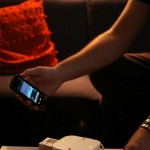In cooperation with an industrial client we explore the field of machine safety in the field of industrial production.
Interaction of the operator and the machine safety equipment. Machine safety, a necessary part in the production process helps to save lives and reduces injuries. But in many cases, the machine safety equipment reduces also the fast interaction of the operator and the machine. So many of the safety equipment is unwanted, not seen as necessary and fooled in the production process. Aim of the project is to find solutions, how this conflict can be reduced.The project will analyze a typical existing situation as basis for the conceptual design development. Supported by the client SCHMERSAL we will develop a visionary concept in the field of “safety in production machinery”
The ideal machine safety equipment would be invisible, without any restrictions to the operator and production process, only acting when necessary and free of costs. Real machine safety equipment features nothing of the ideal conditions. New concepts are needed.It’s about a new and different man machine interaction, automatic detection of human behaviour, optimized design of safety equipment and new technologies for safety equipment.

